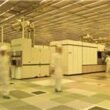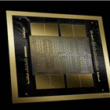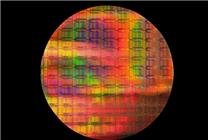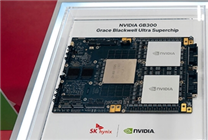NVIDIA Shifts Focus from SOCAMM1 to SOCAMM2: Implications for the AI Memory Landscape
Summary:
- NVIDIA has halted the development of its SOCAMM1 memory, pivoting its efforts towards SOCAMM2.
- This transition aims to enhance memory specifications and maintain competitive advantage in the AI sector.
- Micron currently leads in SOCAMM1 production, while competitors like Samsung and SK Hynix are targeting mass production in 2025.
In a significant industry development, NVIDIA has reportedly suspended its first-generation SOCAMM memory technology, turning its attention to SOCAMM2. This pivot comes on the heels of technological challenges that impeded the progress of SOCAMM1, which was initially designed to offer modular LPDDR memory solutions. The goal was to deliver high bandwidth and low power consumption advantages, akin to HBM (High Bandwidth Memory) systems critical for AI servers. However, disappointing advancements necessitated this strategic reset.
Previous Specifications and Market Expectations
NVIDIA initially marketed SOCAMM1 with impressive specifications featured in the GB300 NVL72 documentation, promising support for up to 18TB LPDDR5X capacity and a staggering bandwidth of 14.3TB/s. Such characteristics positioned SOCAMM1 as a potential game-changer in data center operations. Earlier market expectations projected shipments of SOCAMM could vary between 600,000 to 800,000 units by 2025, emphasizing NVIDIA’s ambitions to rapidly introduce innovative solutions.
Transition to SOCAMM2: Key Enhancements
The newly proposed SOCAMM2 is set to include enhancements in data rates from 8533MT/s to 9600MT/s, with possible support for LPDDR6 technology. This development indicates NVIDIA’s commitment to iterating on its memory solutions to better serve the demands of high-performance computing and artificial intelligence applications. By making this shift, NVIDIA aims to secure its leading position in the rapidly evolving AI market.
Competitive Landscape: Micron vs. Rivals
Micron made headlines earlier this year by becoming the first manufacturer to commence mass production of SOCAMM1, creating a significant first-mover advantage within the AI server market. In contrast, competitors like Samsung and SK Hynix have only recently indicated plans to initiate mass production by the third quarter of 2025. If NVIDIA’s decision to suspend SOCAMM1 becomes definitive, it could potentially allow these competitors to diminish the gap in output and innovation, reshaping the competitive landscape.
Conclusion: NVIDIA’s Long-Term Vision
NVIDIA’s strategic pivot from SOCAMM1 to SOCAMM2 reflects a broader vision and urgency to enhance its technological offerings amid escalating competition in the AI sector. With initiatives focused on optimizing bandwidth, power retention, and overall memory performance, the company appears poised to retain its edge over burgeoning competitors. As the market awaits the implications of this transition, observers will closely monitor how it influences both NVIDIA’s future product lines and the broader dynamics of AI memory solutions.
This decisive action not only underscores NVIDIA’s commitment to innovation but also highlights the fierce competition among memory manufacturers as they vie for leadership in a market increasingly driven by AI advancements.








